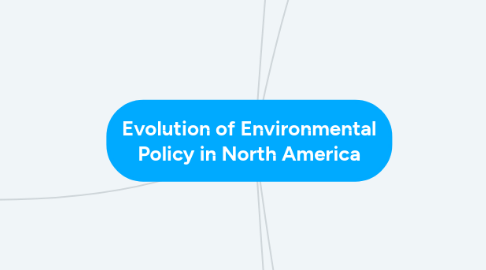
1. The Co-Evolution of Environmentalism and the Media
1.1. Perception of Risk is Influenced by:
1.1.1. Whether the risk is controllable
1.1.2. whether the risk is taken voluntarily
1.1.3. whether sensitive groups may be affected
1.1.4. whether the effects are immediate
1.1.5. whether the risk is perceived as fair
1.1.6. whether people trust authorities to properly manage risks
1.2. Cognitive Frames
1.2.1. Ecological: more concerned about biodiversity
1.2.2. Economic: concerned about money
1.2.3. Human rights: threat to the lives of people ie. Indigenous groups
1.3. Why does the Media Reports Poorly?
1.3.1. Environmental issues are complex and technical
1.3.2. journalists have little time to fully understand, oversimplification
1.3.3. poor scientific literacy, and disagreement among professionals
1.3.4. Tendency to report only short term concerns
1.3.5. Different stakeholders able to manipulate media
1.4. Accuracy of Media Reporting
1.4.1. Type 1 Errors: Reporting that a policy is effective when it is not
1.4.2. Type 2 Errors: Reporting that a policy is not effective when it is
2. Conservationism
2.1. Resource conservationism, primarily concerned with forests
2.2. About finding a balance between the wise use of resources and the presentative of species and habitats
2.3. Appreciation of nature and the wide use of natural resources
2.4. Henry David Thoreau, George Marsh, John Muir
2.5. Audubon Society (1895)
2.5.1. To protect the exploitation of natural resources
2.6. Banff National Park (1885)
2.6.1. First Canadian National Park, more about promoting tourism
2.7. Parks Act (1930)
2.7.1. Explained the breakdown of national parks and protection
2.8. Canada-US Boundary Waters Treaty (1909)
2.8.1. First international environmental agreement that set up the International Joint Commission to protect the Great Lakes
2.9. Commission on Conservation (1909)
2.9.1. Independent commission on conservation specifically for water and forests
3. First Wave of Environmentalism (1950s-1985)
3.1. Associated with a high degree of consumerism and consumption
3.2. Club of Rome - Limits to Growth (1972)
3.2.1. talked about population growth based on computer modelling and said that the way we were growing was not sustainable
3.3. National Environmental Policy Act (1969)
3.3.1. established a process for environmental assessment
3.3.2. Trying to predict environmental impacts and mitigate impacts
3.4. Silent Spring (1962) - Rachel Carson
3.4.1. Demonstrated the influence of DDT on a bird and communicated scientific ideas in a way the general public could understand
3.5. Science Council of Canada (1977)
3.5.1. after the Oil Crisis of 1973 gas rationing had a huge imapct on the economy
3.5.2. looked at urban issues, protecting human health and prosperity
3.5.3. targeted the pulp and paper industry
3.6. Amory Lovins
3.6.1. Soft Path Solutions
3.6.2. Argued that efficient technology was the solution to overcome the limits of population and economic growth
3.7. Office of Energy Conservation (1974)
3.7.1. The environment fell off of everybodys radar because they got through the oil crisis and there was another recession
3.8. Presidential Election of 1980
3.8.1. Ronald Reagan
3.8.2. Least environmentally friendly president
3.8.3. very pro-business, did not want to constrain industry
3.9. Ministry of Environment (1975-Present)
3.9.1. If you showed promise as an MP they would try you out because no one really cared
3.9.2. Huge budget cut in the 80s
3.10. Environmental Disasters Lead to Concerns
3.10.1. Partial Meltdown Pennsylvania (1979)
3.10.2. Love Canal Toxic Waste Dump Niagara Falls, NY (1978)
3.11. Environment very entrenched in public policy
3.11.1. occurrence and causes of environmental degradation
3.11.2. soil erosion, air pollution, water contamination were worsening over time
4. Second Wave of Environmentalism (1985-2002)
4.1. A lot of International Environmental disasters
4.1.1. Chemical Leak in Bhopal, India (1984)
4.1.2. Chernobyl Nuclear Accident, USSR (1986)
4.1.3. Exxon Valdez oil taken spill, Alaska (1989)
4.1.4. PCB fires in St. Basile-le-Grand Quebec (1988)
4.1.5. Tire fire in Hagersville, Ontario (1990)
4.2. Montreal Protocol
4.2.1. Reduction and eventual phase out of CFCs
4.3. Toronto Conference on the Changing Atmosphere (1988)
4.3.1. Did not produce an international agreement
4.3.2. Business like approach
4.4. Canada-US Acid Rain Treaty (1991)
4.4.1. Canada could show that it had reduced emissions in Ontario Hydro and Nickel smelting
4.5. The Green Plan (1990)
4.5.1. 3 billion dollars into 100 initiatives over 5 years
4.5.2. Four objectives
4.5.2.1. subjecting new federal policies to environmental assessment review
4.5.2.2. regulating 44 priority toxic substances through CEPA
4.5.2.3. 50% waste reduction by 2000
4.5.2.4. Applying principles of sustainable development to agriculture, fishing, forestry
4.5.3. died a year later, never came close to reaching targets
4.6. Recession (1991)
4.6.1. Led to huge lack of public interest
4.6.2. Budget chopped a lot, just a lot o cuts
5. Third Wave of Environmentalism (2002-Present)
5.1. Dominated by climate change which could be reduced by:
5.1.1. more efficient energy use
5.1.2. less carbon intensive
5.1.3. renewable sources of energy
5.1.4. improved recycling of materials
5.1.5. better land use
5.1.6. protection of forests
5.2. Canada ratifies Kyoto Protocol (2002)
5.3. looking at sustainable and organic food ie. avoiding pesticides, herbicides, transportation methods
5.3.1. problem because it is such an important part of a lot of nations economies
5.4. Green politics
5.4.1. Getting 4% of national vote to get funding helped the green party emerge

